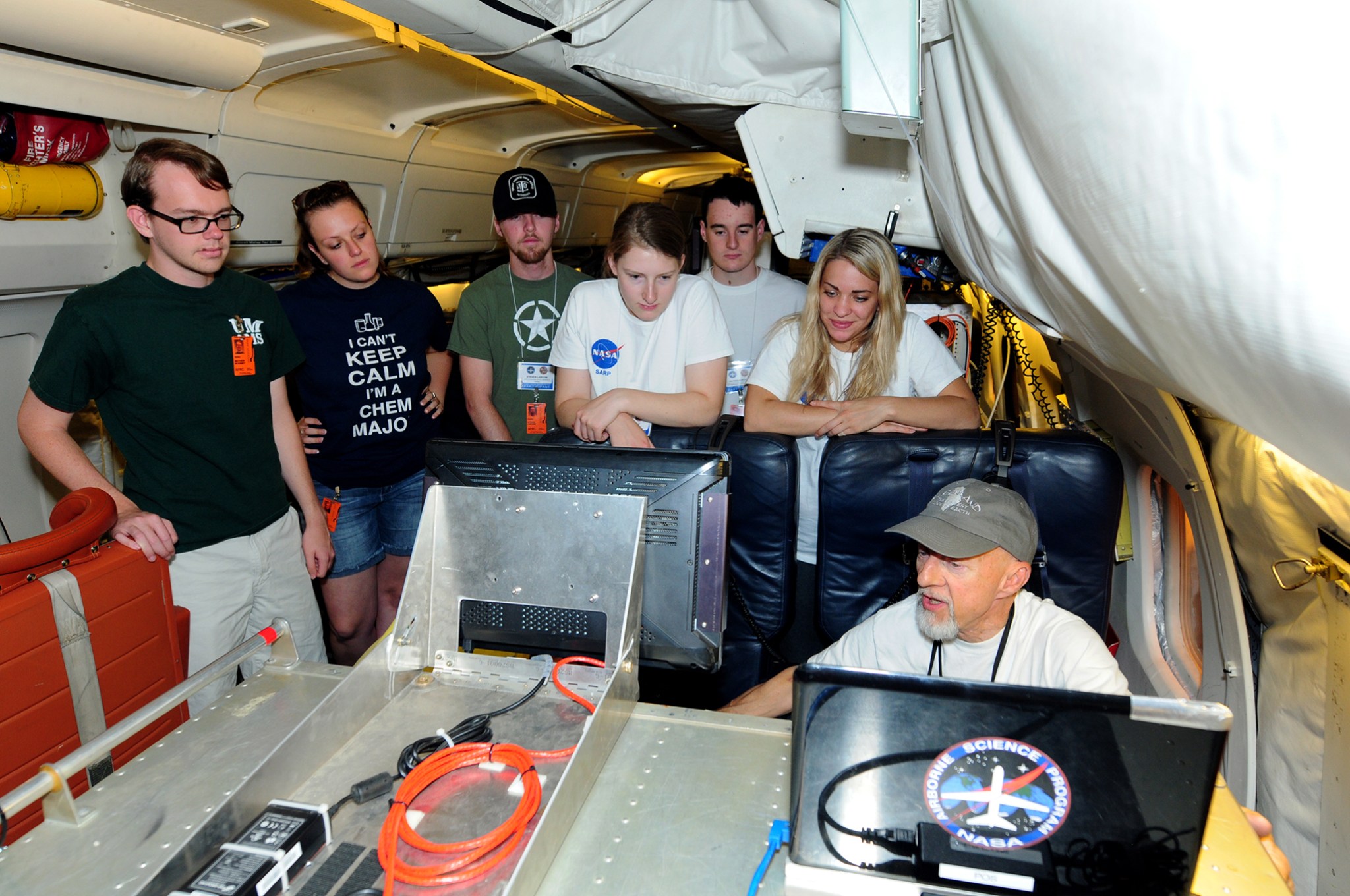Thirty-two undergraduate students are participating in an eight-week NASA Airborne Science field experience designed to immerse them in the agency’s Earth science research.
Now in its seventh year, NASA’s Student Airborne Research Program (SARP) provides a unique opportunity for undergraduate students majoring in the sciences, mathematics or engineering fields to participate in all aspects of a NASA Airborne Science research campaign.
Airborne science research uses aircraft as sky-high platforms for making observations, gathering remote-sensing data with instruments or taking samples. These data can be coupled to NASA’s global satellite observations for a better understanding of the complete Earth system.
SARP participants are given the opportunity to observe and participate in the instrument installation, flight planning and scientific data collection that is the basis of every successful NASA Earth science airborne campaign. These campaigns play a pivotal role in the acquisition of process-oriented knowledge about the Earth system, as well as calibration and validation of NASA’s space-borne Earth observations, remote-sensing measurements and high-resolution imagery for Earth system science.
Hosted by NASA’s Armstrong Flight Research Center facility in Palmdale, California, SARP kicked off on June 15 with lectures by university faculty members, NASA scientists and program managers. There will be students aboard the agency’s DC-8 on each of the six flights during the week of June 22 when they will measure pollution, aerosols (small particles suspended in the atmosphere) and air quality in the Los Angeles basin and in California’s Central Valley. The students will also use airborne and ground-based remote-sensing instruments to study forest ecology in the Sierra Nevada and ocean biology along the California coast.
Students are mentored by NASA scientists from Headquarters in Washington, D.C., the Langley Research Center in Hampton, Virginia, and the Ames Research Center at Moffett Field, California. Additional mentors are university faculty members, postdoctoral fellows and graduate students from the University of California in Irvine, San Diego, Santa Cruz and Davis. The University of Colorado in Boulder, the University of Wisconsin and the University of Houston are also providing mentors.
The aircraft will overfly dairies and oil fields in the San Joaquin Valley, as well as parts of Los Angeles, the Santa Barbara Channel and the Salton Sea at altitudes as low as 1,000 feet in order to collect air samples, measure aerosols and air quality. The DC-8 can fly at altitudes of 42,000 feet, carry 30,000 pounds of scientific instruments and seats up to 45 experimenters and crew.
During the last two flights, half of the students will be in the field taking validation or complementary measurements while the DC-8 flies overhead.
The final six weeks of the program will take place at the University of California in Irvine, where students will analyze and interpret the data they collected aboard the aircraft and in the field. In addition to this data, students can use data gathered by SARP participants in the previous six years. At the conclusion of the program, each student will present his or her results and conclusions to an audience of NASA scientists and administrators, university faculty members and fellow SARP students. Many students go on to present their SARP research projects at national conferences. In 2014, eight students presented their research at the American Geophysical Union fall meeting and three were selected for the AGU Outstanding Student Paper Award.
Students participating in the 2015 SARP represent 32 different colleges and universities from across the United States and Puerto Rico. They were competitively selected based on their outstanding academic performance, future career plans and interest in Earth system science.
The Student Airborne Research Program is one of NASA’s tools for exposing future scientists and engineers to the Earth Science missions that support environmental studies and the testing and development of new instruments and future satellite mission concepts. The program’s goal is to stimulate interest in NASA’s Earth science research and aid in the recruitment and training of the next generation of scientists and engineers, many of whom will be getting their first hands-on research experience during this program.
SARP is managed by NASA’s Ames Research Center through the Cooperative for Research in Earth Science and Technology (ARC-CREST), under the leadership of the National Suborbital Education and Research Center at the University of North Dakota with funding and support from NASA’s Earth Science Division.
NASA uses the vantage point of space to increase our understanding of our home planet, improve lives and safeguard our future. NASA develops new ways to observe and study Earth’s interconnected natural systems with long-term data records. The agency freely shares this unique knowledge and works with institutions around the world to gain new insights into how our planet is changing.
For additional information about SARP, visit:
View video about the 2014 SARP experience:
For more information about NASA’s Airborne Science Program, visit:
http://airbornescience.nasa.gov
For additional information about NASA’s DC-8, visit:
http://airbornescience.nasa.gov/aircraft/DC-8
For more information about NASA’s Earth science program, visit:
Kate Squires
NASA Armstrong Flight Research Center
661-276-2020
kate.k.squires@nasa.gov
Kimberly Williams
NASA Ames Research Center
650-604-2457
kimberly.k.williams@nasa.gov
Emily Schaller, Science and Education Coordinator
National Suborbital Education and Research Center
701-317-0789
eschaller@nserc.und.edu



























